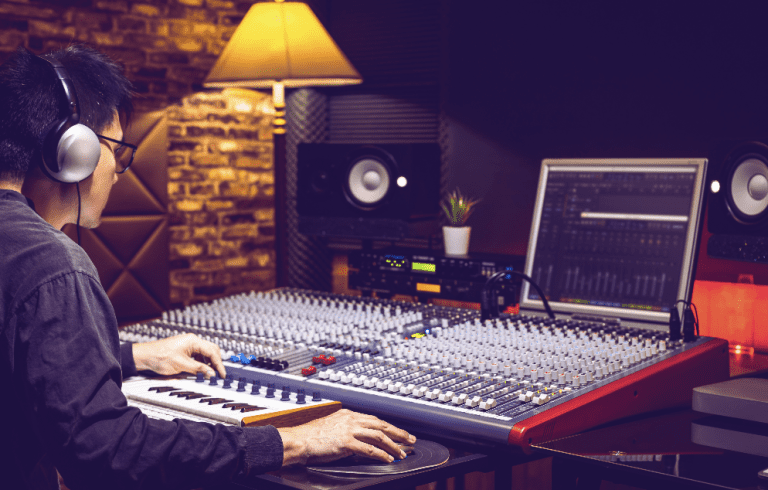The Difference Between Bad and Good Music Mixing
You’ll encounter a crucial stage towards the end of putting music together: music mixing.
This step is about perfecting your track’s overall sound by ensuring that each element is balanced and the final product is harmonious and cohesive.
So, how to tell the difference between bad and good music mixing?
Several factors can impact the outcome of your mix, including the instruments’ balance, sound clarity, dynamic range, and consistency.
This guide will help you determine whether your mix needs work and provide valuable tips and tricks to help you improve.
Let’s get started!
Key Takeaways
How to Tell the Difference Between Bad and Good Music Mixing?
In music mixing, you combine multiple audio elements to create a final stereo or surround sound mix.
These elements can include vocals, instruments, ambient sounds, etc.
You’ll also adjust levels, pan, equalize, and use effects and other audio processing techniques to create a final product whose elements don’t clash.
Your goal in music mixing is to ensure that every element is audible, contributing, balanced, and consistent.
There are several ways to differentiate between good and inadequate music mixing.
Let’s break it down and provide you with some tips.
1. Balance
The first step to good music mixing is ensuring that the volume and presence of each instrument are balanced.
You don’t want your track to be jarring or harsh to the ear or an instrument to overpower another or be too quiet.
Beginner musicians often make poor mixing decisions when mixing tracks solo.
At the same time, it may seem wise to isolate a track to hear it more clearly, but modifying it in isolation can cause it to clash with the other tracks.
2. Clarity
Your final mix’s elements should be clear, distinct, and well done.
While listening, you should be able to tell the instruments apart.
On the contrary, lousy mixing often involves muddled, muffled, or clashing sounds.
Here’s what you can do to ensure clarity:
- Use equalization to cut out any unnecessary frequencies interfering with your sound.
- Use panning to create space in the stereo field and make each track more distinct.
- Please pay attention to levels and adjust them accordingly to avoid one track overpowering another.
- Use reference tracks to compare mixes and make any necessary changes.
3. Frequency Balance
Another concern that arises in mixing is the frequencies tracks occupy.
You want to ensure each instrument occupies its frequency range to not clash with other sounds.

For example, bass should occupy lower frequencies, while snare and vocals should occupy higher ones.
If they don’t, they can create harsh or piercing sounds that can be fatiguing or potentially damaging.
4. Dynamic Range
Dynamic range, which is troublesome for newbies, is the difference between the song’s loudest and quietest parts.
However, if you over-compress your elements, they’ll have little difference.
It’ll be difficult for the listener to tell the elements apart because compression brings up the volume of quieter elements and brings down that of louder ones.
A sign of over-compression is typically squashed-down waveforms that look very similar, resulting in a lifeless and flat track.
Here’s what you should know:
- While mixing, avoid reducing the dynamic range by over-compressing.
- A good mix has a balanced range that allows the listener to tell the elements apart, resulting in greater clarity and detail, emotional impact, tension, and excitement.
5. Consistency
Consistency plays a huge role in your mix.
Your mix’s overall sound and style should be consistent throughout the song, so avoid any abrupt changes mid-way that can be jarring or distracting.
To ensure this, pay attention to levels, equalization, and compression. You can also use reference tracks that meet your goals and compare your mix with theirs.
6. Creativity
This is strictly personal, and we’ll break it into two main points.

A good mix should:
- Be unique, recognizable, and reflective of your style, regardless of the genre. Listeners should recognize your signature style and sound, as it’s key to building a loyal fanbase and making yourself stand out from other artists.
- Be creative with your mixing techniques. Use effects, panning, equalization, and everything in your audio processing arsenal to create an engaging final product.
Why Is Good Mixing Important?
Here’s why good mixing is necessary:
- It enhances the sound quality since the music elements are clear, distinct, and seamlessly fit together.
- It makes you stand out as an artist. Good mixing is a sign of expertise; you can build a loyal fanbase for commercialization.
Good mixing makes the resulting mix immersive, engaging, and emotionally impactful.
Because of the harmony of the elements, it pulls in the listener and captures their attention.
Conclusion
Music mixing is a crucial part of music production that can make or break a song.
You can create an engaging and cohesive final product by paying attention to your tracks’ balance, clarity, and dynamic range.
Good music mixing can set you apart from other artists and turn first-time listeners into fans.
So, as a beginner, mastering the art of music mixing is an important step in your musical journey.
To create the best possible mix, follow our tips and keep practicing and experimenting!
Sources
https://www.landr.com/how-to-mix
https://www.audio-issues.com/music-mixing/the-only-music-mixing-tips-youll-need/







